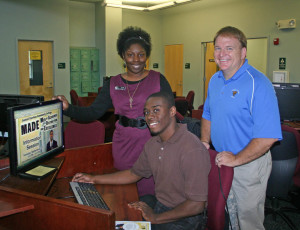
2016 US Figure Skating Nationals Novice Champion and subject of this blog Eric Sjoberg (left) and Junior Champion Tomoki Hiwatashi (right) at the Friends of Figure Skating breakfast following the competition.
OK, many of my blog readers and followers know that I like to add some items now and then about my favorite pastime, figure skating. When I retired and started my own business, I had the time and flexibility to start attending the US Figure Skating Nationals, which I have done the past seven years. And then at age 59, I decided to take up the sport myself and am training to compete with older adults. (See my blog “Finding a New Passion at Age 59.”)
And not only do I attend the “senior” events (these are the people we see on television and who go to the Olympics), but I stay the entire week to see the young up and coming skaters who will be our Olympians in 2018 or 2022.
Below the senior level are the junior and novice divisions.
The novice skaters are most often between 12 – 15 years old and are the top 12 who finish the top four of their sectionals in the east, central and west United States.
One of my favorites is a young skater named Eric Sjoberg, who I first saw in 2014 when he was one of the youngest competitors in novice at age 12. This small 5 foot tall guy had wonderful choreography and beautiful hand movements and won the silver medal. It was also fun sitting in the stands next to his excited and nervous parents.
I looked forward to seeing Eric the next year as he competed again in novice. He grew 8 inches in one year and was having a hard time adjusting to his new body. He struggled in his programs and instead of finishing one from the top like the previous year, he finished one from the bottom – yes – 11th out of 12.
Most of us would probably quit right then. It is very disappointing to go from the top to the bottom. I spoke to him and his mother Sandra afterwards and encouraged Eric to keep up his training and not to give up because he had such a natural talent.
And Eric did not. He showed great character and fortitude as a young teen and worked harder than ever the next year. I came to US Nationals in St. Paul, MN in January of this year, anticipating what Eric would show us this year. His long program was far superior to all competitors and he won the gold medal in Novice. He adjusted to his growth spurt and completed seven triple jumps in his program with a new maturity and power. Link here to watch his program on youtube. (I am the fan that threw the dog he is holding in kiss and cry as he awaits his score.)
So we can we learn from Eric? First, to not give up when we go from the top of the heap to the bottom. Instead work even harder with renewed determination. And second, as things change, adjust and build on our new assets. Eric was able to use his new height and weight to add strong athletic jumps to his earlier artistic flare to deliver an excellent competitive program.
As Eric continues to work hard, I look forward to seeing this young athlete representing the US on the world stage and Olympics in future years.


